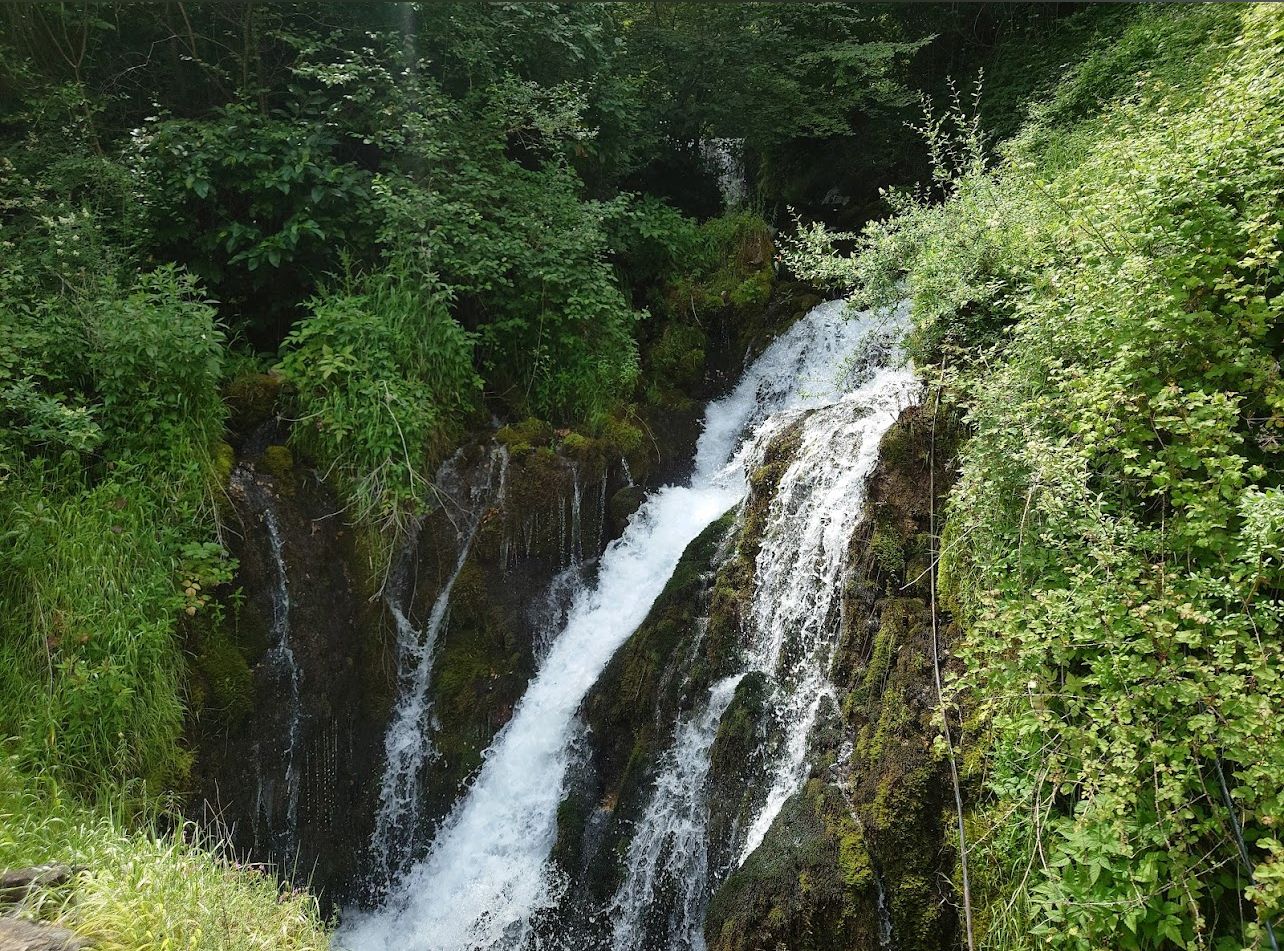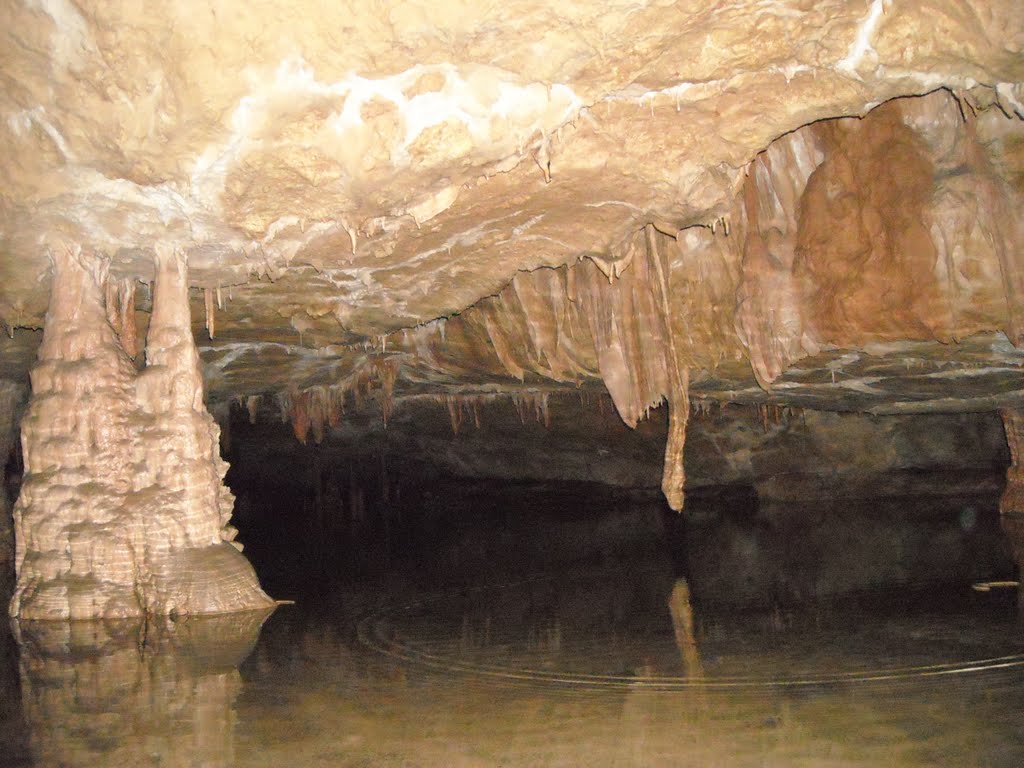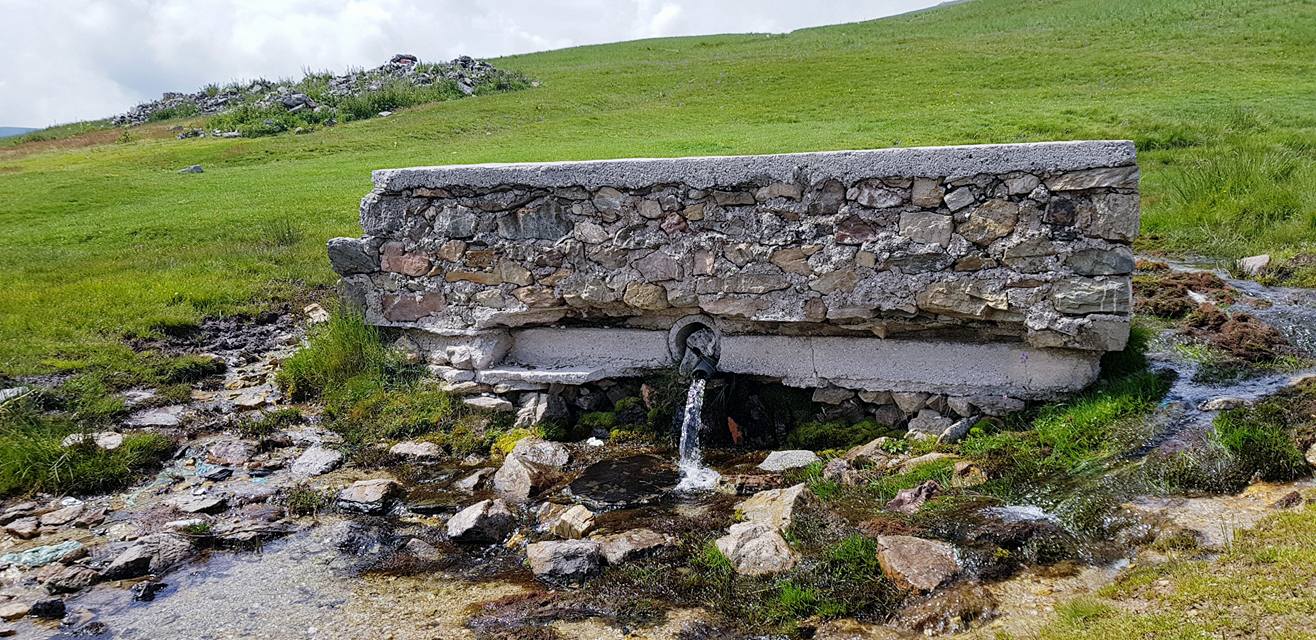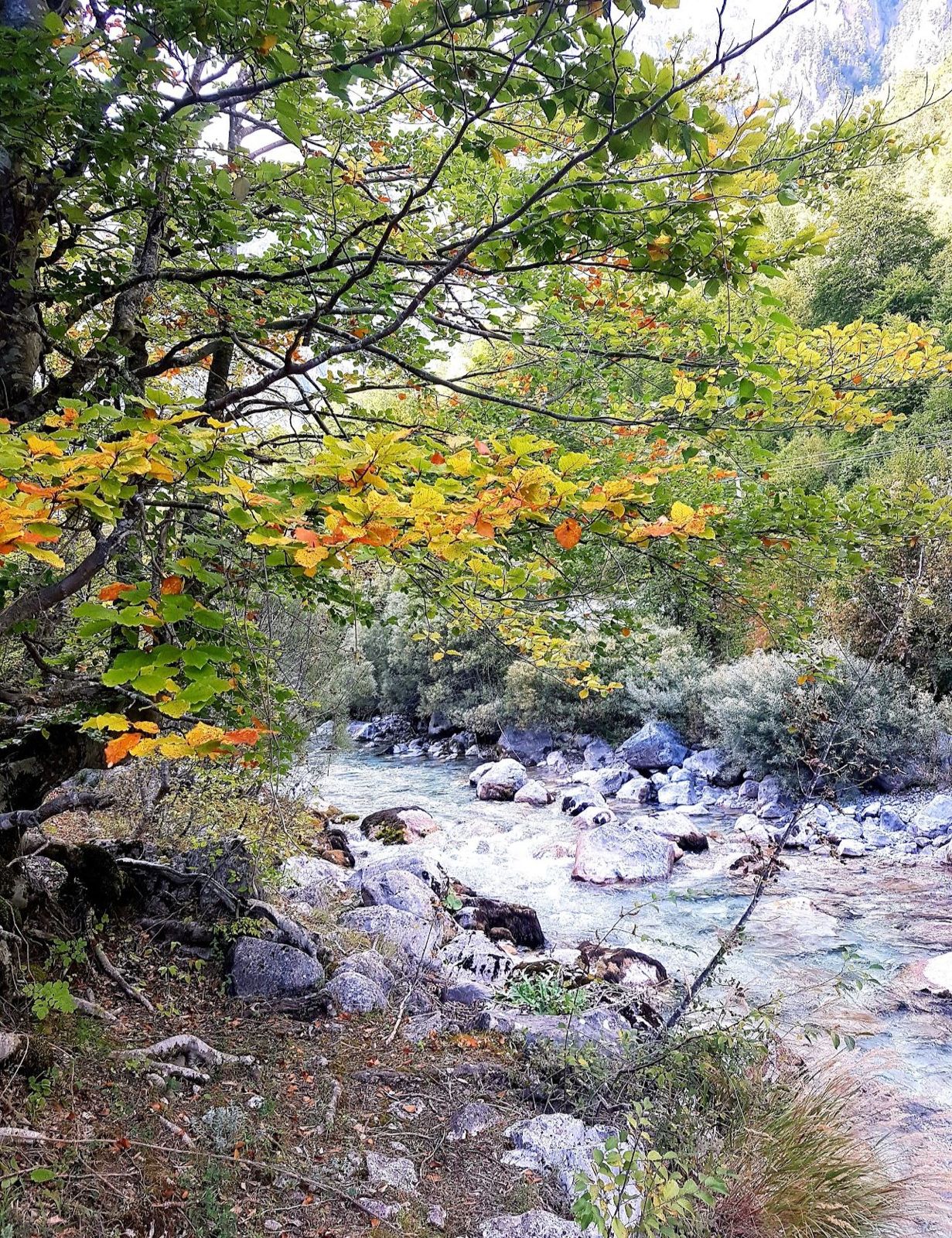Cult Points
The Gate Of Pasha
The Gate Of Pasha stands as a significant cultural landmark in Berat, designated as a first-category cultural monument. This architectural gem, situated at the city's center, holds immense historical and artistic value, boasting stone arches, vaults, and intricate carvings.
Attributed to the grandfather of Usta Naum Ngjela, a Lavdari i Opari native, the gate's construction dates back to the late
Nature
Sopanika Waterfall
The Sopanika waterfall, situated on a mountain slope fed by the Sopanika spring, offers a captivating display of nature's beauty. As the cold water cascades into the river below, it creates a mesmerizing spectacle of rushing waters and foaming pools, adorned with shades of white and blue.
The powerful force with which the water emerges from the rock, forming a natural funnel, adds to the enchantm
Cult Points
UraAbdyl Aga's Bridge
Abdyl Aga's Bridge, also known as Black Scale Bridge, stands as a significant cultural monument in the Black Scale Gorge, linking the villages of Barkanesh and Cudhi in Kruja's highlands. Serving as a vital connection between Ranxë villages and Krujë highlands, it spans the Zeza River, historically part of the caravan route linking Shkodra and Lezha with Dibra.
Constructed around 1810-1
Cult Points
The Legend of Gryka e Vajë
The legend of Gryka e Vajë, or the Valley of Washes, recounts a tragic event that occurred on June 16, 1478, leaving a poignant mark on the history of Kruja. Located north of the town, on the northernmost part of Kruja Mountain, Gryka e Vajë holds symbolic significance for the community.
Following the conquest of Kruja by the Ottoman army, Albanians found themselves under Ottoman rule
Nature
Neziri Cave, Mat
Neziri Cave, an important archaeological site near Blazi Cave in Albania's Mati area, reveals a rich history spanning multiple periods. Excavations from 1979 to 1981 uncovered a cultural treasure, with layers up to 4 meters thick and evidence of multiple residential phases.
Distinct pottery styles characterize different periods, including monochrome gray to black pottery from the Eneolithic era,
Cult Points
Val Cave
The Val Cave, a remarkable natural wonder, stands proudly east of Perlat village in the Kthelle municipality, part of Mirdita province. It's a prominent feature of the Selita mountain system, with areas like Mulli, Didha, and Valmori, ranging from 1300 to 1500 meters above sea level. Nestled away from the Uraka valley, it offers a stunning landscape.
This cave system, comprising Mulli, Qaf-kish
Nature
Ragam Village
Rragami, nestled in the northeastern part of Shkodra, is a hidden gem surrounded by majestic mountains and lush valleys. As part of the Gur i Zi administrative unit, the village boasts a rich and sprawling natural landscape.
Surrounded by mountains and pastures, Rragami offers a unique setting enhanced by an artificial lake and its protective dam. The village is crossed by the Bistall stream, add
Cult Points
"Kusia e Ndue Gjonit" Cave
The "Kusia e Ndue Gjonit" cave near Mërkurth village, Mirdita district, is an exceptional natural monument with extensive dimensions and karst formations. Stretching about 750 meters, it forms a labyrinth of galleries, including large halls adorned with stunning speleological formations like stalactites, stalagmites, and columns.
One particularly beautiful hall features vertical wells, slo
Nature
Pëllumbasi Cave
The Pëllumbasi Cave, also known as the Black Cave, stands as an archaeological marvel steeped in history and culture, situated near the village of Pëllumbasi. This site holds immense significance for both researchers and visitors alike, providing a captivating glimpse into the early epochs of human civilization.
For millennia, the Black Cave has served as a refuge and habitation for our
Cult Points
Saint Vlash Cave, Laç
St. Vlash Cave near the church of Shna Ndout in Sebaste (Laç) of Kurbin is a holy place and closely connected with the history and cult of St. Vlash, a Christian martyr known for his act of sacrifice.
In the report of 1641, Bishop Mark Skura noted the existence of this cave saying: "There is the cave of Saint Vlashthe martyr, who was captured by some men called 'agricola', three mile
Nature
Shëngjergj Waterfall
The Shëngjergji Waterfall, once a hidden treasure, now welcomes visitors as a breathtaking natural attraction. A short journey from Tirana unveils stunning landscapes and unspoiled nature along the national road to Shëngjergj. Passing through mountains and lush greenery, the road leads to the oasis of Shëngjergji, where the waterfall cascades 30 meters down
Cult Points
The Assembly Church of the Rubik Monastery
The Assembly Church of the Rubik Monastery, also known as the Redemption Church, is an important monument of cultural heritage, located in the Lezha region. This monument of the "Architecture" type. The church has a long history, starting from 1166.
The Church of the Rubik Monastery is a remarkable structure for its architecture and is considered an example of the Norman style. It has a particula
Nature
Eremite Cave of Koshorisht
Eremite Cave of Koshorishti is a rich treasure of Albanian history and culture. This cave is also known as the Church Cave and is considered the largest and most important cave in Albania. In the scientific literature, it is known differently as the Letmi Cave due to its location on the side of the Letmi Mountain, but for the purposes of this description, we will call it the Koshorishti Cave.
The
Cult Points
Kroi i Bardhë(White Fountain)
Kroi i Bardhë, whose source is located between Didha and Kunora mountains, is known for its curative values. In this natural center, the waters of Kroi Bardhë have shown the ability to influence the healing of several diseases, including those of the larynx, stomach, kidneys, and thyroid.
Kroi i Bardhë has been a favorite destination for visitors and vacationers for more than 25 ye
Nature
Dragobi Village, Tropojë
Dragobia, nestled in the picturesque Margegaj region of Tropoja, is a charming mountain village exuding tranquility and rural charm. Surrounded by majestic mountains and lush pastures, it offers a stunning natural backdrop.
Flowing through the heart of the village is the serene Valbona River, providing a refreshing touch of nature to Dragobia's environment. With its clean and clear waters, the ri
Cult Points
Bato's Cave
"Bato's Cave", located in the mountains of Djuxha, is an important archaeological site associated with a prominent figure in Illyrian history, General Bato. Bato played a major role in the great Illyrian uprising against the Roman invaders, historically known as the "Great Illyrian Revolt", which took place in the period 6-9 AD.
The Roman historian Velej Paterkuli mentions that the Pirustes and
Nature
Vanave Canyon
Vanave Canyon, situated in Albania, is a remarkable natural marvel found along the Luma River, near the village of Topojan. Stretching approximately 3.5 kilometers in length, with depths reaching 300 meters and widths ranging from 30 to 40 meters, it boasts a breathtaking landscape of steep slopes, formations, and streams merging into the river.
This canyon is not only visually stunning but also
Cult Points
Shpella e Gurit të Kuq( Red Stone Cave)
The Red Stone Cave is a special natural destination, with numerous characteristics that make it popular and attractive to visitors. The cave is located near the village of Vakuf, about 500 meters above sea level. It is a karst cave formed in Upper Triassic limestones. The length of the cave reaches 400 meters, while the width varies from 2 to 3 meters. Its height reaches up to 4 meters.
The cave
Nature
Kavaja Rock
The Kavaja Rock is a conglomerate and sandstone formation dating back to the Miocene era, striking the shoreline near the bay of Durrës. Stretching 560 meters in length and 160 meters in width, this natural monument bears witness to centuries of historic battles.
Its name is linked to the Battle of Dyrrah in 48 BC, a significant event between Caesar and Pompey. Throughout history, this site
Cult Points
Sebaste Castle, Lac
The Castle of Sebastes, Lac is a cultural monument of the first category in Albania, declared as such since 1963. This fortification of the Late Antiquity period rises on a hill about 200 meters high, providing a strategic control point over the plain of Laci. The walls of the castle of Sebastes are an important evidence of the ancient period, which dates from the 4th to the 6th century.
The cast


 (1).jpg)

.jpg)
 (1).jpg)
.jpeg)
.jpg)
.jpeg)

.jpeg)
.jpg)
.jpeg)





.jpeg)

.jpg)
